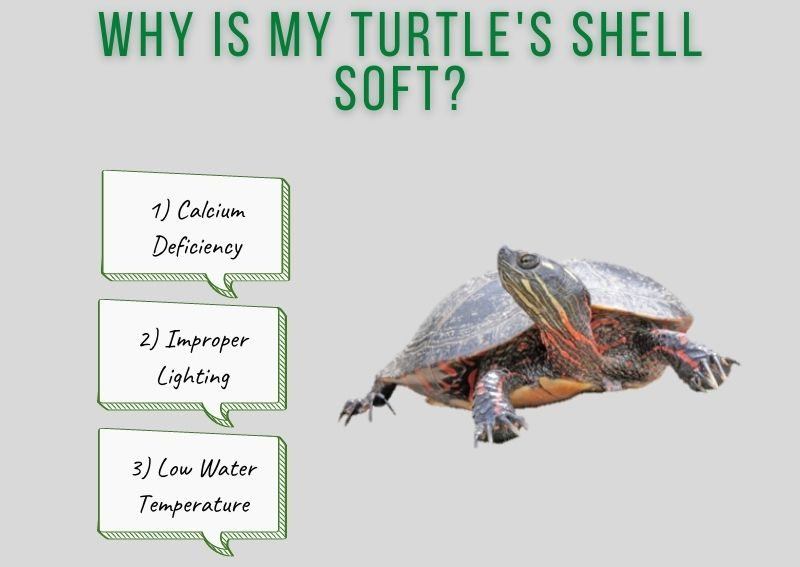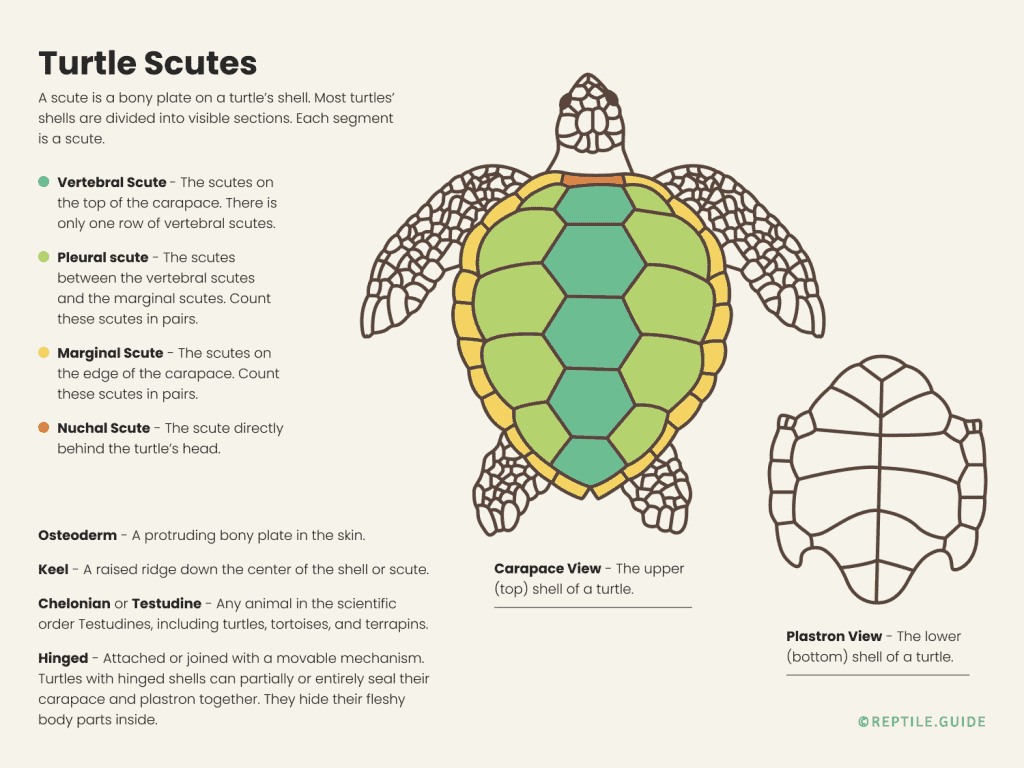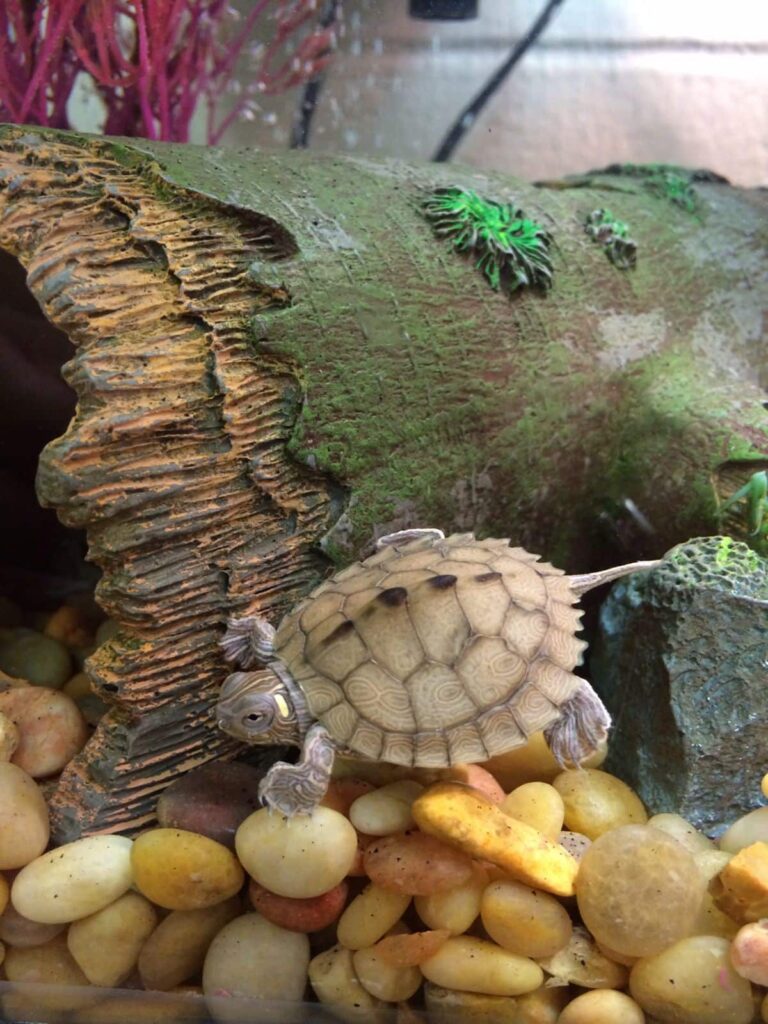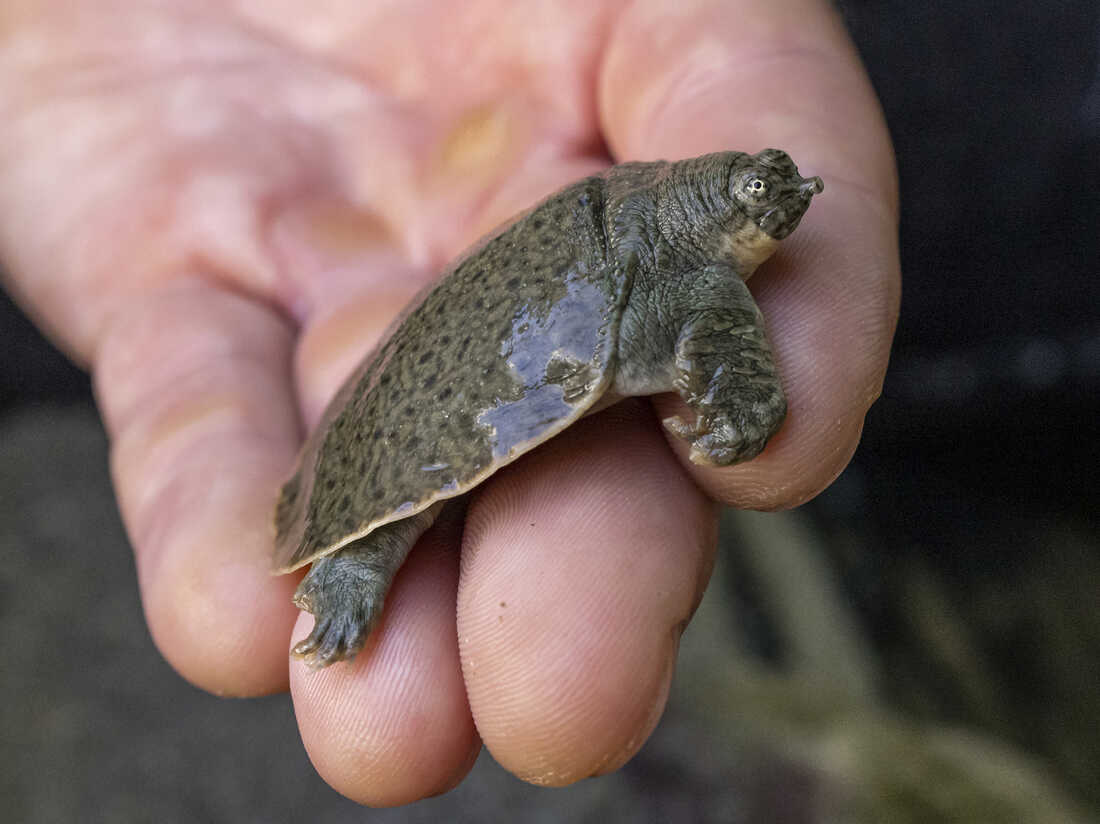Have you ever wondered why some baby turtles have soft shells? It turns out that shell softening in baby turtles is a growing concern among conservationists. In this article, we will explore the reasons behind this condition and discuss the various methods being employed to address and prevent shell softening in these adorable reptiles. So, if you’re interested in learning more about how we can protect the fragile shells of baby turtles, keep on reading!

What is Shell Softening?
Shell softening refers to a condition in which the shell of baby turtles becomes weak and pliable instead of the strong and rigid structure it should be. The normal shell structure of baby turtles is crucial for their overall health and well-being. It provides protection for their internal organs and serves as a defense mechanism against predators. When the shell becomes soft, it can lead to various health issues and can significantly impact the turtle’s quality of life if not addressed promptly.
Understanding the Normal Shell Structure of Baby Turtles
Before delving deeper into shell softening, it is essential to understand the normal structure of a baby turtle’s shell. The shell consists of two main parts: the upper convex carapace and the lower flat plastron. These parts are comprised of plates called scutes, which are made of a protein called keratin. As the baby turtles grow, these scutes form rings and act as the building blocks of a mature and sturdy shell.
Causes and Symptoms of Shell Softening
Shell softening can occur due to various factors, ranging from genetics to environmental conditions. Some potential causes include inadequate UVB light exposure, deficient calcium and vitamin D3 levels, improper temperature and humidity levels, and a lack of proper nutrition. It is crucial to identify and address the root cause to effectively treat and manage shell softening in baby turtles.
Common symptoms of shell softening include a pliable and flexible shell, visible indentations or deformities, and the ability to easily press or squeeze the shell. Additionally, the turtle may exhibit behavioral changes such as decreased activity levels, reluctance to move, and a lack of appetite. These symptoms may vary in severity depending on the underlying cause and the stage of shell softening.
Importance of Early Detection and Treatment
Early detection and treatment of shell softening are crucial to prevent further deterioration and ensure the well-being of the affected baby turtle. Recognizing the signs and symptoms early on allows for timely intervention, which can significantly improve the chances of successful treatment and recovery. Neglecting or delaying treatment can lead to irreversible damage and may even be life-threatening for the turtle.
Recognizing Shell Softening
To effectively address shell softening in baby turtles, it is important to recognize the condition through physical examination, visual indicators, and behavioral changes associated with shell softening.
Physical Examination of Baby Turtles
A thorough physical examination by a reptile veterinarian is essential to assess the overall health of the turtle and confirm the presence of shell softening. The veterinarian will carefully examine the shell, looking for any signs of pliability, deformities, or abnormalities. They may also palpate the shell to assess its flexibility and identify any indentations or soft spots.
Visual Indicators of Shell Softening
Visual indicators can be helpful in recognizing shell softening. A soft shell may appear dull and discolored compared to a healthy shell, which is typically vibrant and well-defined. The scutes may show signs of erosion or deterioration, and there may be visible gaps or separations between the scutes. It is important to note that visual indicators should be used in conjunction with a physical examination and other diagnostic tests to confirm the presence of shell softening definitively.
Behavioral Changes Associated with Shell Softening
Shell softening can cause discomfort and pain for baby turtles, leading to various behavioral changes. Some common behavioral signs include decreased activity levels, reluctance to move or explore their environment, and a lack of appetite. These changes may be indicative of underlying health issues related to shell softening and should not be overlooked.
Monitoring and Assessment
Once shell softening is recognized, monitoring and assessing the turtle’s condition are essential to guide treatment and track progress. This involves providing optimal environmental conditions, recording and tracking shell development, and regularly updating weight and measurements.
Providing Optimal Environmental Conditions
Creating the right environment for a baby turtle is crucial for their overall health and the management of shell softening. This includes maintaining appropriate temperature and humidity levels, offering a suitable basking area, and ensuring access to clean and properly treated water. An appropriate UVB light source should also be provided to help the turtle synthesize vitamin D3 and aid in calcium absorption, key factors in shell health.
Recording and Tracking Shell Development
Regularly recording and tracking the development of the turtle’s shell can provide valuable insights into the effectiveness of the treatment and the progression of shell hardening. This can be done through photographs or detailed written measurements, noting any improvements or changes observed over time.
Regular Weight and Measurement Updates
Monitoring the turtle’s weight and measurements is essential to evaluate its overall growth and track any changes during the treatment and recovery process. Regular updates will help veterinarians assess the turtle’s progress and make any necessary adjustments to the treatment plan.
Diagnostic Testing
Diagnostic testing plays a crucial role in confirming shell softening and identifying the underlying causes. This involves radiography and imaging techniques, laboratory analysis of shell samples, and consultation with a reptile veterinarian.
Radiography and Imaging Techniques
Radiography, or X-ray imaging, can provide detailed information about the turtle’s shell structure and any abnormalities or softening present. This non-invasive technique allows for a clear visualization of the internal structure of the shell, allowing veterinarians to assess the severity of the condition and plan an appropriate treatment approach.
Laboratory Analysis of Shell Samples
Laboratory analysis of shell samples can provide valuable insights into the nutritional deficiencies, mineral imbalances, or other underlying factors contributing to shell softening. By analyzing the composition of the shell and identifying any deficiencies or abnormalities, veterinarians can tailor the treatment plan to address these specific issues effectively.
Consultation with a Reptile Veterinarian
Consulting with a reptile veterinarian who specializes in the treatment of shell conditions is crucial in diagnosing and managing shell softening. These experienced professionals can provide expert advice, develop a personalized treatment plan, and guide caregivers through the process of addressing and caring for a baby turtle with a soft shell.

Treatment and Management
Treating and managing shell softening in baby turtles involves adjusting environmental factors, implementing dietary changes and nutritional supplements, and providing orthopedic support and physical therapy.
Adjusting Environmental Factors
Creating and maintaining an optimal environment is essential for the treatment and recovery of baby turtles with shell softening. This includes ensuring proper temperature and humidity levels, providing UVB light exposure, and offering a suitable basking area. Adjusting these environmental factors helps support the turtle’s overall health and promotes shell hardening.
Dietary Changes and Nutritional Supplements
Proper nutrition is crucial in treating shell softening. Baby turtles with soft shells often require a balanced diet that is rich in essential nutrients, including calcium and vitamin D3. Caregivers may need to adjust the turtle’s diet by incorporating mineral and vitamin supplements or adding specific foods that are high in calcium. Regular monitoring of the turtle’s food intake and weight is vital to ensure nutritional needs are met during the treatment process.
Orthopedic Support and Physical Therapy
In severe cases of shell softening or deformity, orthopedic support and physical therapy may be necessary. These measures aim to correct any misalignments or abnormalities in the shell structure and promote proper growth and hardening. Orthopedic devices such as shell braces or custom-made supports may be used under the guidance of a reptile veterinarian to aid in the rehabilitation process.
Prevention and Prevention
Preventing shell softening in baby turtles is crucial for their overall health and well-being. This involves providing adequate UVB light exposure, maintaining proper temperature and humidity levels, and offering a balanced diet.
Providing Adequate UVB Light Exposure
UVB light exposure is essential for baby turtles as it helps them synthesize vitamin D3, which is crucial for calcium absorption and proper shell development. Caregivers should ensure that the turtle is exposed to appropriate levels of UVB light by using a UVB light source specifically designed for reptiles and following the manufacturers’ recommendations.
Maintaining Proper Temperature and Humidity Levels
Maintaining proper temperature and humidity levels in the turtle’s environment is essential for their overall health and the prevention of shell softening. Caregivers should provide a suitable heating and lighting system to create the correct temperature gradient and humidity levels within the turtle’s habitat. Regular monitoring of these conditions is crucial to ensure they remain within the appropriate range.
Offering a Balanced Diet
A balanced diet is key to preventing shell softening in baby turtles. Caregivers should provide a varied and nutritionally rich diet that includes foods high in calcium, such as leafy greens, vegetables, and calcium-fortified commercial turtle food. It is important to avoid feeding the turtle excessive amounts of high-phosphorus foods, as they can interfere with calcium absorption. Regularly consulting with a reptile veterinarian or an experienced turtle specialist can help ensure the turtle’s dietary needs are met.

Rehabilitation and Recovery
Rehabilitation and recovery of baby turtles with shell softening require ongoing care, follow-up monitoring, and gradual shell hardening.
Follow-up Care and Monitoring
Continued follow-up care and monitoring are crucial to track the turtle’s progress and make any necessary adjustments to the treatment plan. Regular veterinary check-ups, weight and measurement updates, and ongoing assessment of the turtle’s shell development are essential during the recovery process. Monitoring the turtle’s behavior and appetite can also provide valuable insights into their overall well-being.
Importance of Gradual Shell Hardening
While it may be tempting to hurry the shell hardening process, it is important to allow for gradual and natural recovery. Rushing the process or using excessive orthopedic support can potentially cause more harm than good. The turtle’s body needs time to strengthen and heal naturally, and the caregiver’s role is to provide the optimal conditions and support for this process.
Guidance for Proper Handling and Tank Setup
During the rehabilitation and recovery phase, it is crucial to provide proper handling and tank setup to minimize stress and potential harm to the turtle. Caregivers should ensure that the turtle’s habitat is secure, clean, and adequately sized. Handling should be done gently and with care, avoiding any unnecessary pressure on the shell. Proper tank setup, including appropriate temperature gradients, hiding spots, and a suitable basking area, promotes a stress-free environment and aids in the recovery process.
Best Practices and Guidelines
In addition to the specific steps outlined above, there are several best practices and guidelines to follow when addressing shell softening in baby turtles.
Educating Turtle Owners about Shell Health
Educating turtle owners about shell health is essential in preventing shell softening and promoting responsible ownership. Caregivers should be aware of the proper husbandry practices, including providing adequate UVB light exposure, maintaining proper temperature and humidity levels, and offering a balanced diet. Regular veterinary check-ups and ongoing monitoring of the turtle’s shell development are also important components of responsible ownership.
Collaborating with Reptile Rescue Organizations
Collaborating with reptile rescue organizations can be beneficial in addressing shell softening in baby turtles. These organizations often have expertise in caring for reptiles and can provide valuable guidance and support throughout the treatment and recovery process. They may also offer resources and educational materials to help educate the public about responsible turtle ownership and the prevention of shell softening.
Promoting Responsible Turtle Ownership
Promoting responsible turtle ownership is crucial in preventing shell softening and ensuring the well-being of these fascinating creatures. This includes adopting turtles from reputable sources, providing appropriate care and habitat, and seeking prompt veterinary care when needed. Additionally, it is important to raise awareness about the potential risks and challenges associated with baby turtle care and to discourage the impulse purchase of these animals as pets.

Conclusion
Early intervention is crucial when it comes to recognizing and addressing shell softening in baby turtles. Through thorough physical examinations, visual indicators, and behavioral changes, caregivers can identify the condition and seek appropriate veterinary care. Diagnostic testing, treatment, and management strategies such as adjusting environmental factors, dietary changes, and orthopedic support can help rehabilitate and promote the recovery of baby turtles with shell softening. By implementing preventive measures, educating turtle owners, and promoting responsible ownership, we can work towards a future where shell health awareness is widespread and the well-being of baby turtles is prioritized. Continued efforts are necessary to ensure that these precious creatures receive the care they need and deserve.
